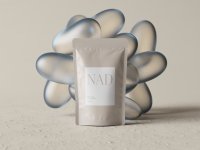
Semax
Description
Semax is a synthetic peptide primarily known for its potential cognitive-enhancing and neuroprotective properties. Developed in Russia, it's derived from a fragment of adrenocorticotropic hormone (ACTH). This article provides a comprehensive yet accessible overview of Semax, covering its uses, dosage, side effects, and the science behind its effects.
Quick Overview: Semax At-a-Glance
- Key Benefit(s): May enhance focus, memory, and neuroprotection.
- Primary Mechanism: Increases Brain-Derived Neurotrophic Factor (BDNF) levels.
- Best For: Individuals seeking potential cognitive enhancement and neuroprotective benefits.
- Typical Dose Range: 100-900 mcg daily, depending on the formulation.
- Key Caution/Consideration: Limited human studies, not FDA-approved.
Table of Contents
Categories & Effectiveness
Learn about our rating methodologySystemic Health
Immune System Balance
2/10Limited evidence of effectiveness
Vascular Health
2/10Limited evidence of effectiveness
Dosage & Side Effects
Recommended Dosage
Potential Side Effects
Bioavailability & Half-Life
Interactions & Stacks
Recommended Products
Multi Collagen Peptides Powder - Hydrolyzed Collagen Types I, II, III, V, X for Skin, Hair, Nails & Joint Support - Unflavored, Gluten-Free, Easy to Mix - Non-GMO, Paleo Friendly 16oz (1 Pack)
- Rated 5.0 stars by 4 customers
- Special offer: Save 30% with coupon
Photozyme DNA Youth Recovery Facial Serum | 1.7 Fl Oz
- Rated 4.4 stars by 104 customers
- Premium quality ingredients
Glow Anti Aging Supplement - Hyabest® Hyaluronic Acid, Ceramide, 5000 mcg Biotin, Vitamin A, C, E, Zinc - Hair Skin Nails Vitamins for Women & Men - Wrinkles & Skin Hydration - 60 Capsules
- Rated 4.4 stars by 96 customers
- Special offer: Save $5.00 with coupon
As an Amazon Associate we earn from qualifying purchases. Prices and availability are accurate as of the date/time indicated and are subject to change.
Benefits by Use Case
Enhanced Focus
Some users report improved focus and concentration with Semax, likely due to its effects on neurotransmitter systems. However, scientific evidence is limited and more research is needed.
neuroprotection
Semax is believed to have neuroprotective properties, potentially protecting brain cells from damage and promoting recovery from injury. This is mainly based on animal studies.
Mechanism of Action
Frequently Asked Questions
Where to Buy Semax
Based on quality, price, and customer reviews, here are our top recommended Semax supplements:
Purity Products JointGel Formula - Collagen Peptides + MSM - Supports Joint Function + Flexibility While Fortifying Joint Cartilage - Dual Action - Daily Powder - 30 Servings (30 Servings, Chocolate)
- Rated 4.2 stars by 897 customers
- Premium quality ingredients
celimax The Vita A Retinal Shot Tightening Booster | with Liposomized Retinal, Matryxyl, Pore Minimizer, Wrinkles & Fine Lines, Firmer Skin, 15ml
- Rated 4.4 stars by 308 customers
- Special offer: Save 5% with coupon
ProMix Nutrition Collagen Peptides, Vanilla - Hydrolyzed Collagen Protein Promotes Healthy Skin, Bones, Joints & Recovery Support - Add to Shakes, Smoothies, Beverages - 2.5 Pound (Pack of 1)
- Rated 4.4 stars by 278 customers
- Premium quality ingredients
As an Amazon Associate we earn from qualifying purchases. Prices and availability are accurate as of the date/time indicated and are subject to change.
Summary & Expert Opinion
- Key Strengths: May improve focus and mood, potential neuroprotective properties.
- Key Weaknesses: Limited human studies, not FDA-approved, potential side effects.
- Recommendation: Explore cautiously after consulting with a healthcare professional, especially if you have pre-existing health conditions or are taking other medications.
Deeper Dive:
Semax's mechanism of action is complex and involves multiple pathways. While its primary effect is believed to be through increasing BDNF levels, it also interacts with dopamine and serotonin neurotransmitter systems, which play a critical role in mood regulation and cognitive function. The interaction with melanocortin receptors is less understood but may contribute to its diverse effects.
The pharmacokinetics of Semax are also noteworthy. Its administration via nasal spray allows it to bypass the blood-brain barrier, but this also means that it is subject to rapid degradation by peptidases. This may explain its relatively short half-life, necessitating frequent dosing for sustained effects. The different forms of Semax, such as N-acetyl Semax and N-acetyl Semax amidate, are designed to improve its stability and bioavailability.
Conflicting study results and methodological limitations also exist in the research landscape. Many studies are conducted on animal models, and the results may not always translate to humans. Larger, well-designed clinical trials are needed to confirm the efficacy and safety of Semax for various conditions.
Consider This: If you're considering Semax, it's essential to be aware of the limited research and potential risks. Consult with a healthcare professional to discuss whether it's appropriate for you, especially if you have any pre-existing health conditions or are taking other medications.










